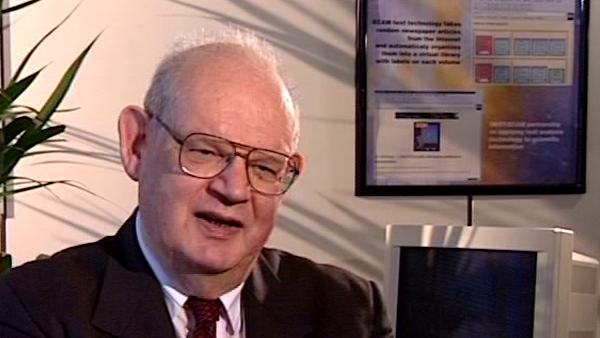Before going on, it's perhaps necessary just to say that when you have no what you call " variance", there is no law of large numbers; it is the law of probability as everybody is familiar with. So there is no average wealth of a man walking down Wall Street, for instance. I'm just quoting so that everybody understands the importance of having this "no variance" phenomena.
Yes. And even Pareto understood that. Pareto wrote this expression, and then apparently he got some flak, so he said if you prefer, he would go to power-law with an exponential term, which makes the variance finite; or if you wish you could have a maximum income, that makes the variance finite. But that was just, you know, a face-lift, it was nothing, it didn't change reality. But in a real sense what I was facing, I felt, in this field, was that people were being too nice about existing tools and nobody wanted to say that this was a different kind of randomness. It was not simply a matter of changing a little bit, of adding corrective terms, of this and that; it was a matter of facing the possibility of something very different. And you mentioned the law of large numbers in the central limit theorem. There is a possibility of central limit theorem with infinite variance. Again it was at that time total esoterica. More precisely, there are fixed points. The Gaussian is a fixed point. Two Gaussians added is then the Pareto Gaussian. But Goshi, Polya and Paul Levy had found that there are other distributions that had the same property of a fixed point under addition - Levy called them 'stable', for better or worse, they were possibilities. But Levy viewed them as being exceptional, of no relevance and so on. I was fortunate in having been Levy's student and having liked this man; on a few occasions having been cornered at lectures at which I was the only student therefore who could not go, and therefore heard things I didn't think I wanted to hear, I learned a collection of esoterica which might have been totally irrelevant but which for me became fundamental. So after it became clear that of course incomes aren't Gaussian, I said why not try the next simple fixed point. And this was a very constant activity in my mind - this emphasis upon fixed points. Given that for one reason or another - and I will give other examples - phenomena outside of mainstream physics have no well-defined scale or scales of various kinds; you deal with mixtures, with sums, with these things; which distributions are fixed points and if they're those fixed points, let us see whether by any chance the data actually completely fixed points. So my model of income distribution - which is not something of central significance, not as important by far as my work in prices - was based upon this idea of fixed points as the preferred model for everything. Again, let me remind you that a little bit later, maybe five or ten years later that was the tack that physics took in condensed matter physics, in the theory of critical phenomena in emphasising fixed points and convergence to them. But for that I needed to have distributions of these variables, which nobody thought were important. In fact, after computing them I tried to publish them and I was laughed out of court: people said, "These things are total esoterica. Who cares how they look like? They are not important." For me they were tremendously important, in fact exactly how they looked like. And the income distribution study had many virtues; I would not want to knock it down, it was a necessary preparation for my next stage in prices. But if I think of it retrospectively, I did not become, how should I say, respected and known in that profession by this work.
Benoît Mandelbrot (1924-2010) discovered his ability to think about mathematics in images while working with the French Resistance during the Second World War, and is famous for his work on fractal geometry - the maths of the shapes found in nature.
Title: Fixed points
Listeners:
Bernard Sapoval
Daniel Zajdenweber
Bernard Sapoval is Research Director at C.N.R.S. Since 1983 his work has focused on the physics of fractals and irregular systems and structures and properties in general. The main themes are the fractal structure of diffusion fronts, the concept of percolation in a gradient, random walks in a probability gradient as a method to calculate the threshold of percolation in two dimensions, the concept of intercalation and invasion noise, observed, for example, in the absorbance of a liquid in a porous substance, prediction of the fractal dimension of certain corrosion figures, the possibility of increasing sharpness in fuzzy images by a numerical analysis using the concept of percolation in a gradient, calculation of the way a fractal model will respond to external stimulus and the correspondence between the electrochemical response of an irregular electrode and the absorbance of a membrane of the same geometry.
Daniel Zajdenweber is a Professor at the College of Economics, University of Paris.
Duration:
4 minutes, 38 seconds
Date story recorded:
May 1998
Date story went live:
24 January 2008






